Comments / Questions (146)
![]() Lia wrote:
Lia wrote:
Ciao, negli aumenti per il raglan viene detto di aumentare ogni 2 giri. Significa quindi: Riga 1 aumento Riga 2 normale Riga 3 aumento Oppure Riga 1 aumento Riga 2 normale Riga 3 normale Riga 4 aumento? Grazie spero di essermi spiegata
14.08.2025 - 22:14DROPS Design answered:
Buongiorno Lia, se deve aumentare ogni 2 giri, aumenta 1 giro si e 1 no. Buon lavoro!
16.08.2025 - 09:04
![]() Jose Munster wrote:
Jose Munster wrote:
Het telpatroon begint met de uitleg brei over de volgende 12 steken A1 en A2 maar A1 en A2 begint met 10 steken , brei A3. Dit zijn totaal 13 steken maar de mouw begint met 19 steken, moet ik dan over de overige 6 steken A3 herhalen?
13.08.2025 - 11:22DROPS Design answered:
Dag Jose,
De telpatronen lees je van onder naar boven, dus A.1 heeft 4 steken, A.2 6 steken en A.3 heeft 3 steken.
18.08.2025 - 10:06
![]() Lone wrote:
Lone wrote:
Jeg kan ikke forstå ærmet. Opskriften stiger at jeg skal strikke A1, strik A2 over de de næste 12 masker, strik A3 og strik 1 maske i glatstrik(den med mærket. Det stemmer bare ikke når der er 19 masker i ærmet. Hvis jeg i stedet strikker A1,A2,A2,A3 så stemmer maskerne, men så får jeg pludselig for mange masker i række 9 i 1. kolonne. Der står at opskriften er rettet, men jeg kan ikke se rettelserne på hjemmesiden. Kan jeg få lidt hjælp til denne smukke bluse. mvh Lone
06.08.2025 - 15:48DROPS Design answered:
Hej Lone. Du stickar A.1, A,2, A,2, A.3 på ärmen (4+6+6+3 m = 19 m). Opskriften här på hjemmesiden är uppdaterad med rettelserne. Vad menar du blir fel i række 9? Mvh DROPS Design
29.08.2025 - 11:37
![]() Yvonne wrote:
Yvonne wrote:
Hallöchen, ich habe eine Frage zum Muster an den Ärmeln. Muss ich die neu angeschlagenen Maschen unterhalb der Ärmel an das Muster anpassen oder werden diese von vornherein glatt rechts gestrickt werden. Das erschließt sich mir nicht ganz. Danke und LG Yvonne
27.07.2025 - 10:56DROPS Design answered:
Liebe Yvonne, ja die neuen Maschen werden im Muster gestrickt, solange es möglich ist, die anderen/übrigen Maschen werden glatt rechts gestrickt, so in der Mitte unter den Ärmel haben Sie glattrechts gestrickten Maschen. Viel Spaß beim Stricken!
04.08.2025 - 11:29
![]() Rannveig wrote:
Rannveig wrote:
Ermene skal fortsette uten økning, men skal man da strikke a1, a2 og a3? Eller bare A2? Overgangen der er vanskelig forklart, for her går ikke mønsteret opp om man fortsetter i a1 uten den første maska som økning.
20.05.2025 - 11:45DROPS Design answered:
Hej, sørg for at mønsteret stemmer over det mønster du allerede har strikket, hvis det ikke stemmer under ærmerne, så strikker du bare de ekstra masker i glatstrik :)
22.05.2025 - 11:57
![]() Julia wrote:
Julia wrote:
Hvor stor bevegelsesvidde er det tenkt at denne genseren skal ha? Altså..hva blir forskjellen på kroppsmål og mål på genser?
20.05.2025 - 10:03DROPS Design answered:
Hej Julia, modellen på billedet har en størrelse på som nok er 10 cm større i omkreds... men mål en bluse du synes om at have på og vælg den størrelse i måleskitsen som har de mål. Når du holder strikkefastheden som står i opskriften, så får du samme mål som i måleskitsen :)
22.05.2025 - 11:55
![]() Astic Josiane wrote:
Astic Josiane wrote:
Merci pour votre réponse mais ma question était pour le premier rang.Lorsque j’ai tricoté A1( (4 mailles),A2(6mailles),etA3 (3mailles) il me reste 6mailles .
12.05.2025 - 09:31DROPS Design answered:
Bonjour Mme Astic, vous en êtes au tout premier rang du premier point ajouré en hauteur? Vous devez simplement tricoter 2 fois les 6 mailles de A.2, ainsi vous avez: 4 m de A.1, 2 x 6 m de A.2 et 3 m de A.3 = 4+12+3=19 m pour la manche. Bon tricot!
12.05.2025 - 11:05
![]() Astic Josiane wrote:
Astic Josiane wrote:
Pour le diagramme des manches Lorsque j’ai tricoté A1etA2 il me reste 11mailles pour A3 alors qu’il n’en faut que 3
11.05.2025 - 16:44DROPS Design answered:
Bonjour Mme Astic, quand les diagrammes sont terminés, vous avez 10 m dans A.1 que vous tricotez ainsi: 4 m de A.1 (1er rang) + 6 m de A.2, tricotez ensuite A.2 comme avant jusqu'aux 9 m de A.3, tricotez encore 1 fois A.2 (6 m) et terminez par les 3 m de A.3. Bon tricot!
12.05.2025 - 08:18
![]() Claudia wrote:
Claudia wrote:
Hallo! Bei Größe XXXL Passe: Man muss von 126 auf 114 Maschen reduzieren und sie dann wie folgt einteilen: 18M/ 19M/ 36M/ 19M /18M - das sind dann aber insgesamt nur 110 Maschen!? Da stimmt doch etwas nicht?
27.04.2025 - 21:15DROPS Design answered:
Liebe Claudia, beachten Sie, daß die Markierer in jeweils einer Masche (und nicht zwischen Maschen) eigesetzt werden, daher kommen die 4 fehlenden Maschen. Viel Spaß beim Stricken!
28.04.2025 - 08:43
![]() Anneli Ahnstedt Stengård wrote:
Anneli Ahnstedt Stengård wrote:
Mönstret rad 3. Börjas med Omslag, sedan Räta maska tidigare än rad 1, men hur fortsätter jag efter det?
19.04.2025 - 20:10DROPS Design answered:
Hej Anneli. Rad 3 i A.1 sticka såhär: omslag, 2 räta maskor, 2 rätmaskor tillsammans, omslag, 1 rätmaska. Mvh DROPS Design
25.04.2025 - 11:14
Remembering Spring#rememberingspringsweater |
|||||||||||||||||||
 |
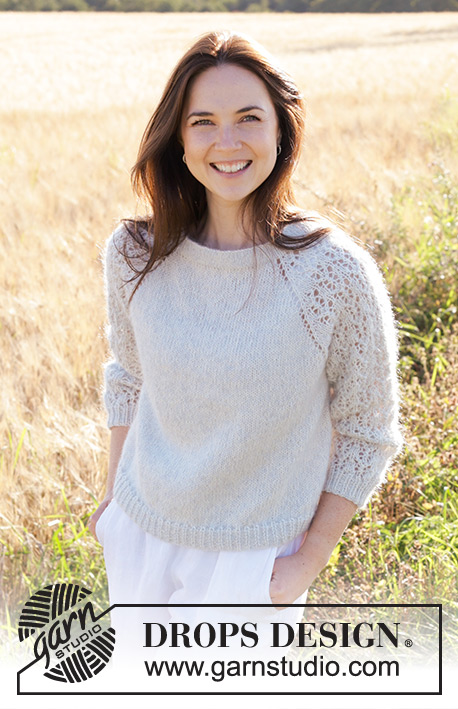 |
||||||||||||||||||
Knitted jumper in DROPS Alpaca and DROPS Kid-Silk. The piece is worked top down with double neck, raglan, lace pattern and ¾-length sleeves. Sizes S - XXXL.
DROPS 250-1 |
|||||||||||||||||||
|
------------------------------------------------------- EXPLANATIONS FOR THE PATTERN: ------------------------------------------------------- PATTERN: See diagrams A.1 to A.3. RAGLAN: Increase 1 stitch by making 1 yarn over before/after each marker-stitch. On the next round knit the yarn overs on the front and back pieces – leaving holes. The yarn overs on the sleeves are knitted twisted – no holes. Work the new stitches in stocking stitch on the front and back pieces and into the pattern on the sleeves. DECREASE TIP (for sleeves): Decrease 1 stitch on each side of the marker-thread as follows: Work until there are 3 stitches left before the marker-thread, knit 2 together, knit 2 (marker-thread sits between these 2 stitches), slip 1 stitch knit-wise, knit 1 and pass the slipped stitch over the knitted stitch (2 stitches decreased). ------------------------------------------------------- START THE PIECE HERE: ------------------------------------------------------- JUMPER – SHORT OVERVIEW OF THE PIECE: The pattern uses both long and short needles; start with the length which fits the number of stitches and change when necessary. The double neck and yoke are worked in the round with circular needle, top down. When the yoke is finished, it is divided for body and sleeves and the body is continued in the round, while the sleeves wait. The sleeves are worked in the round, top down. The neck is folded to the inside and sewn down. If there is a «0» in your chosen size, skip the information and go straight to the next instruction. DOUBLE NECK: Cast on 104-108-114-118-122-126 stitches with circular needle size 4.5 mm, 1 strand DROPS Alpaca and 1 strand DROPS Kid-Silk (= 2 strands). Change to circular needle size 3.5 mm (casting on with a larger needle size gives and elastic cast-on edge). Work stocking stitch in the round for 2½ to 3 cm. Purl 1 round, the neck is later folded along this round. Continue with stocking stitch until the neck measures 6 cm. It will be approx. 3 cm when folded double. Insert 1 marker at the beginning of the round (= mid-back), the yoke is measured from here. YOKE: Change to circular needle size 4.5 mm. Knit 1 round and decrease 10-10-12-12-12-12 stitches evenly spaced = 94-98-102-106-110-114 stitches. Insert 4 markers without working the stitches (these are used when increasing for raglan) as follows: Count 13-14-15-16-17-18 stitches (= half back piece), insert 1 marker in the next stitch, count 19 stitches (= sleeve), insert 1 marker in the next stitch, count 26-28-30-32-34-36 stitches (= front piece), insert 1 marker in the next stitch, count 19 stitches (= sleeve), insert 1 marker in the next stitch, there are 13-14-15-16-17-18 stitches left after the last marker (= half back piece). On the next round, work PATTERN and increase for RAGLAN – read description above, as follows: Knit 13-14-15-16-17-18 (= half back piece), increase 1 stitch for raglan, knit 1 (first marker sits in this stitch), work A.1, A.2 over the next 12 stitches, work A.3, knit 1 (second marker sits in this stitch) (= sleeve), increase 1 stitch for raglan, knit 26-28-30-32-34-36, increase 1 stitch for raglan (= front piece), knit 1 (third marker sits in this stitch), work A.1, A.2 over the next 12 stitches, work A.3, knit 1 (fourth marker sits in this stitch) (= sleeve),increase 1 stitch for raglan, knit 13-14-15-16-17-18 (= half back piece). REMEMBER THE KNITTING TENSION! Continue this pattern but note that the increases are different on the front/back pieces and the sleeves – read INCREASES FOR SLEEVES and INCREASES FOR FRONT/BACK PIECES before continuing! INCREASES FOR SLEEVES: On the sleeves you increase 17-20-21-23-24-25 times on each side (including the first increase described above). The sleeve increases are drawn into diagrams A.1 and A.3. Each time A.1, A.2 and A.3 are finished in height, there is room for 2 more repeats of A.2 between A.1 and A.3. The stitches which do not fit into the pattern on each side of the sleeve are worked in stocking stitch. INCREASES FOR FRONT/BACK PIECES: On the front and back pieces, you increase 22-24-26-29-33-36 times (including the first increase described above), as follows: Increase on each round 0-0-0-0-4-6 times, then every 2nd round 22-24-26-29-29-30 times. AFTER THE LAST INCREASE: When all the increases are finished there are 250-274-290-314-338-358 stitches (70-76-82-90-100-108 stitches on the front/back pieces and 55-61-63-67-69-71 stitches on each sleeve (including the marker-stitches on each side of the sleeves). Continue with pattern and stocking stitch but without further increases. The stitches which do not fit into the pattern on each side of the sleeve are worked in stocking stitch. Work until the yoke measures 19-23-24-26-27-28 cm from the marker. DIVIDE FOR BODY AND SLEEVES: Now divide for the body and sleeves as follows: Knit 35-38-41-45-50-54 (= half back piece), place the next 55-61-63-67-69-71 stitches on a thread for the sleeve, cast on 10-10-12-12-14-16 stitches (in side under sleeve), knit 70-76-82-90-100-108 (= front piece), place the next 55-61-63-67-69-71 stitches on a thread for the sleeve, cast on 10-10-12-12-14-16 stitches (in side under sleeve), knit the last 35-38-41-45-50-54 stitches (= half back piece). The body and sleeves are finished separately. The piece is now measured from here! BODY: = 160-172-188-204-228-248 stitches. Continue with stocking stitch in the round until the body measures 20-18-19-18-19-20 cm from the division. On the next round begin working rib, AT THE SAME TIME on the first round increase 0-4-4-8-8-12 stitches evenly spaced = 160-176-192-212-236-260 stitches, as follows: Change to circular needle size 3.5 mm, work rib (knit 1, purl 1 – remember the increases). When the rib measures 3-3-3-4-4-4 cm, cast off a little loosely with rib. The jumper measures approx. 47-49-51-53-55-57 cm from the shoulder. SLEEVES: Place the 55-61-63-67-69-71 stitches from the thread on the one side of the piece on circular needle size 4.5 mm and knit up 1 stitch in each of the 10-10-12-12-14-16 stitches cast on under the sleeve = 65-71-75-79-83-87 stitches. Insert a marker-thread in the middle of the 10-10-12-12-14-16 stitches under the sleeve. Start at the marker-thread and continue the pattern in the round. The stitches which do not fit into the pattern under the sleeve are worked in stocking stitch. AT THE SAME TIME when the sleeve measures 3-3-3-4-4-4 cm from the division, decrease 2 stitches under the sleeve – read DECREASE TIP. Decrease like this every 4-2½-2-1½-1½-1 cm a total of 6-8-9-10-11-12 times = 53-55-57-59-61-63 stitches. Continue working until the sleeve measures 30-27-26-23-23-22 cm from the division. Change to double pointed needles size 3.5 mm and work rib (knit 1, purl 1). AT THE SAME TIME on the first round increase 1-1-3-3-5-7 stitches evenly spaced = 54-56-60-62-66-70 stitches. When the rib measures 3-3-3-4-4-4 cm, cast off a little loosely with rib. The sleeve measures approx. 33-30-29-27-27-26 cm from the division. ASSEMBLY: Fold the neck double to the inside and sew down. To avoid the neck being tight and rolling outwards, it is important that the seam is elastic. |
|||||||||||||||||||
Diagram explanations |
|||||||||||||||||||
|
|||||||||||||||||||
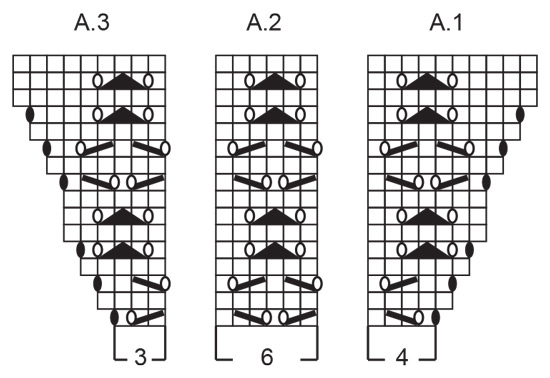 |
|||||||||||||||||||
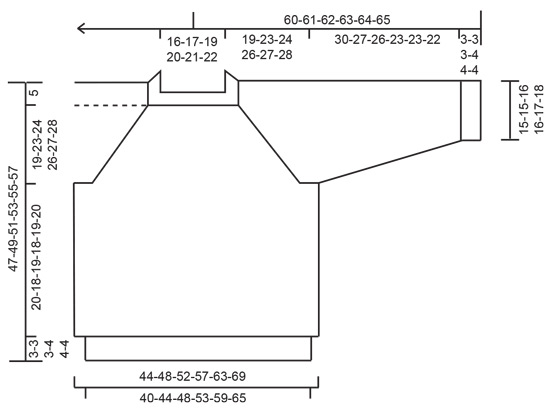 |
|||||||||||||||||||
Have you finished this pattern?Tag your pictures with #dropspattern #rememberingspringsweater or submit them to the #dropsfan gallery. Do you need help with this pattern?You'll find 29 tutorial videos, a Comments/Questions area and more by visiting the pattern on garnstudio.com. © 1982-2025 DROPS Design A/S. We reserve all rights. This document, including all its sub-sections, has copyrights. Read more about what you can do with our patterns at the bottom of each pattern on our site. |
|||||||||||||||||||







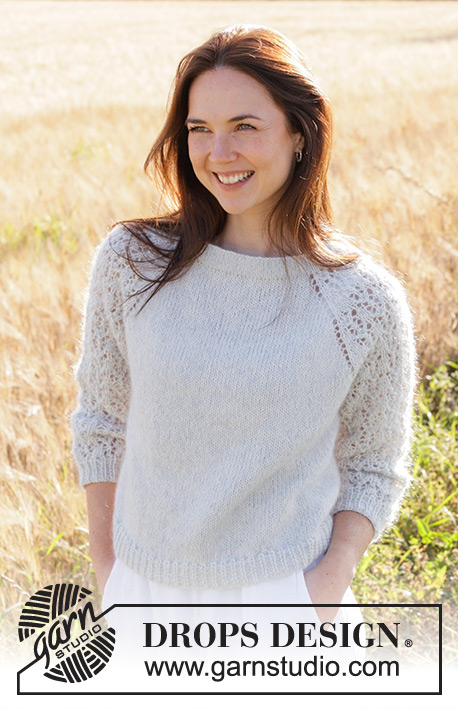
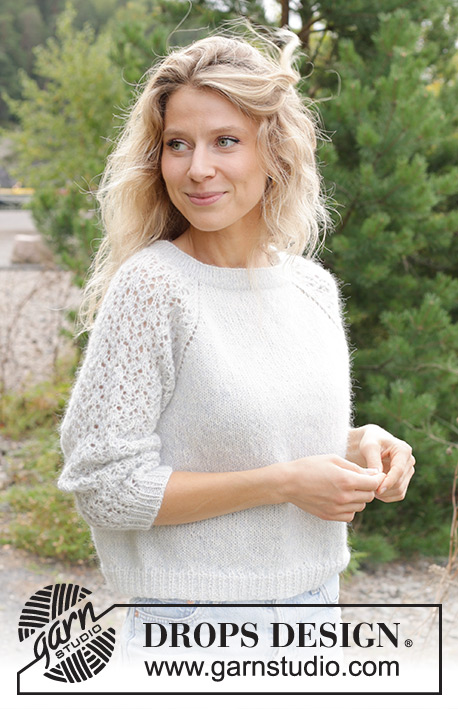
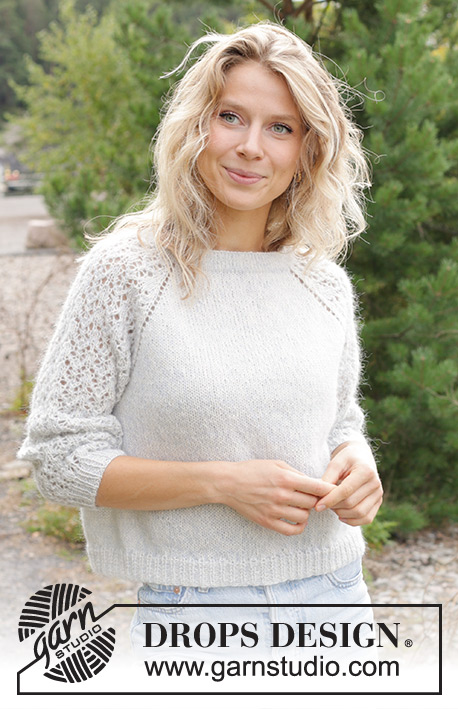

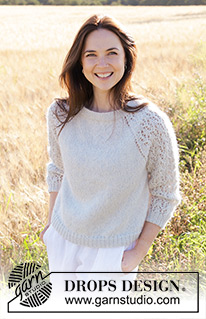
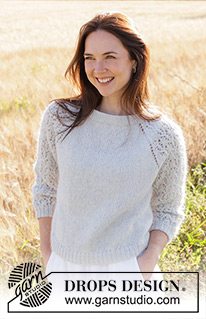

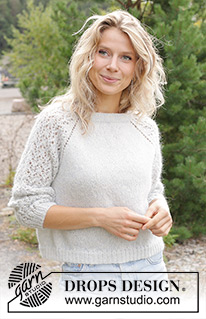

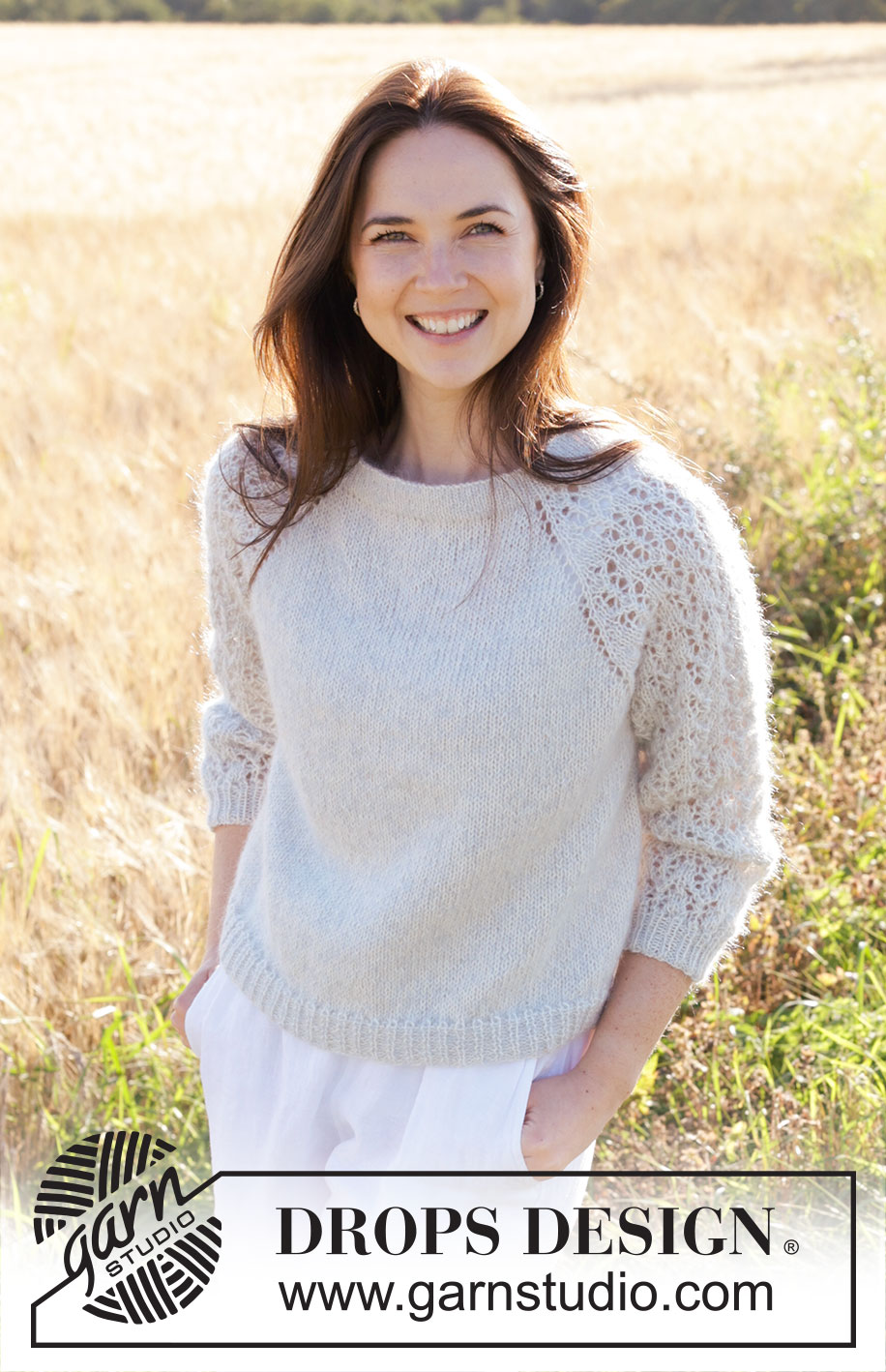
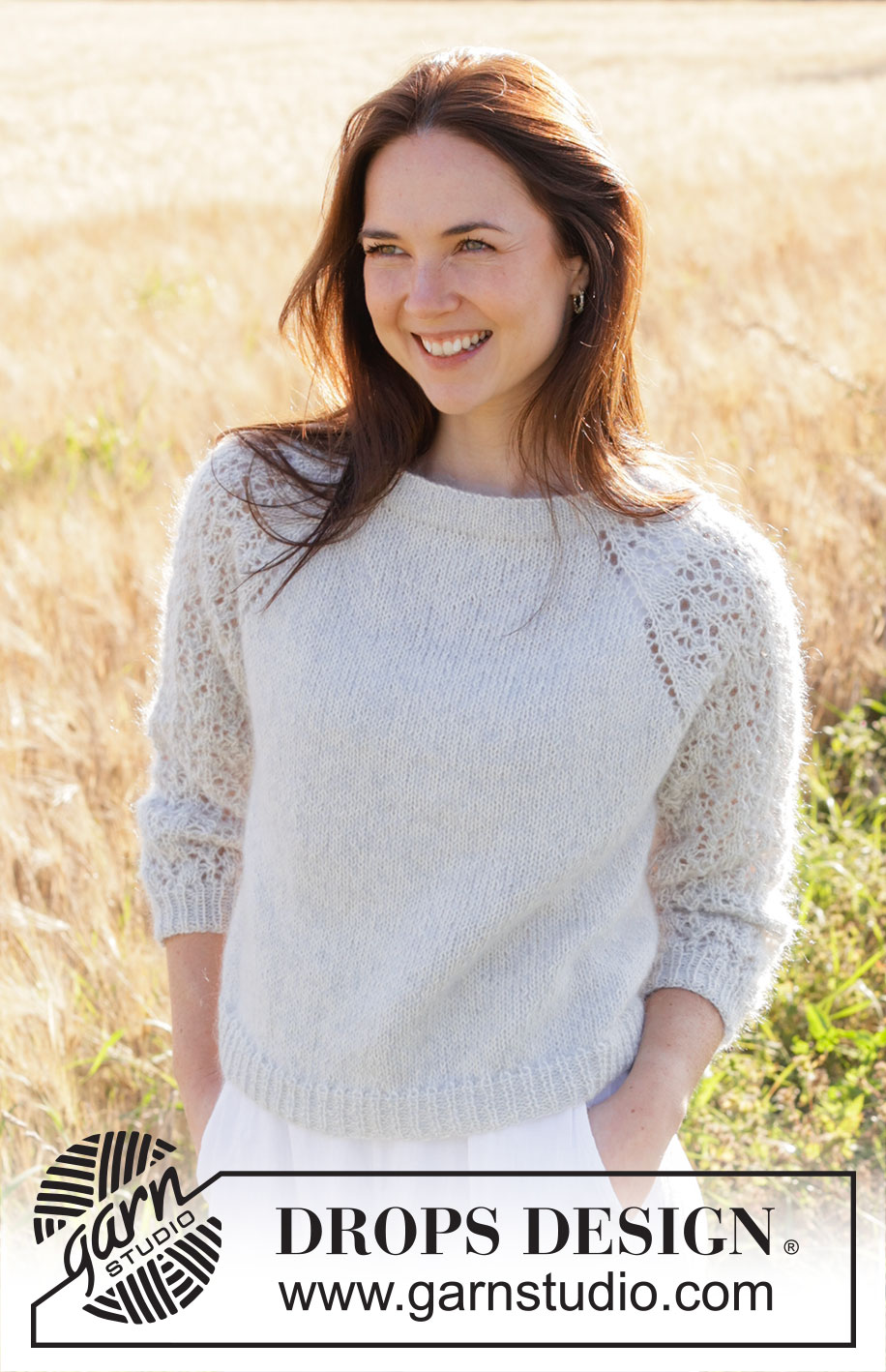

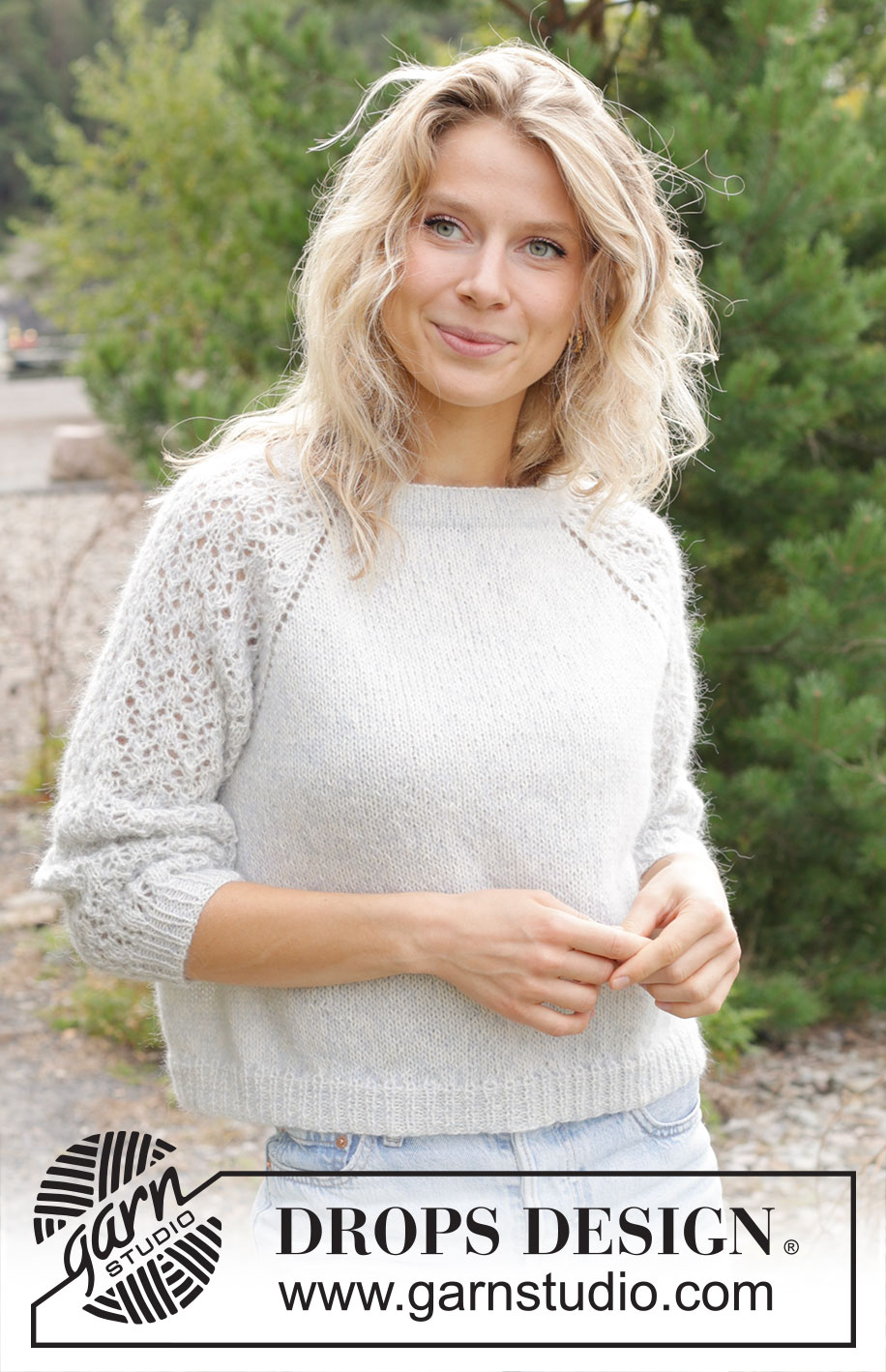




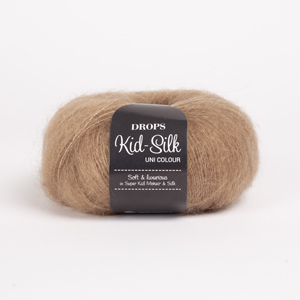

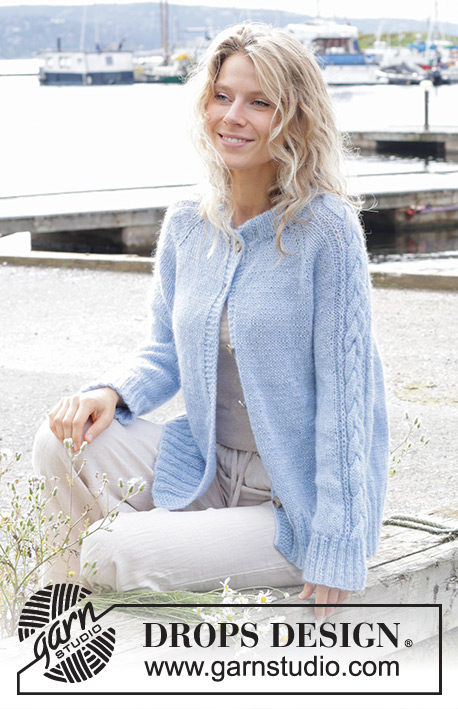
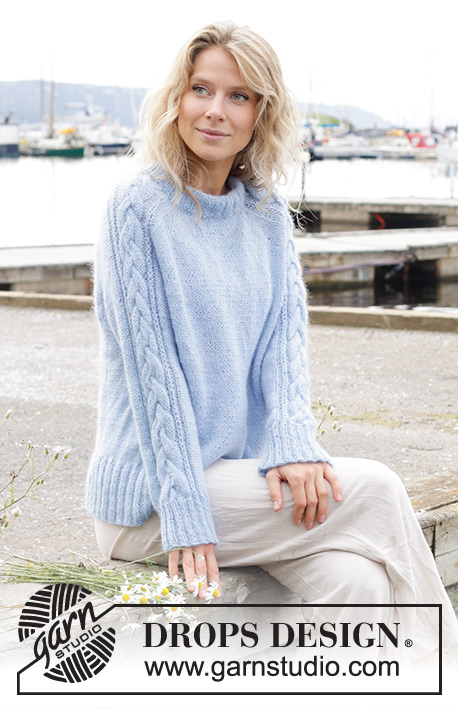




















































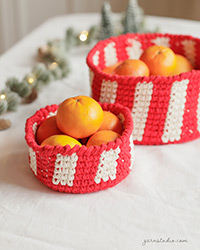
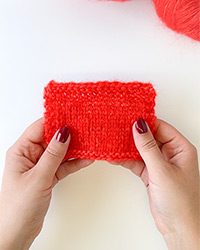
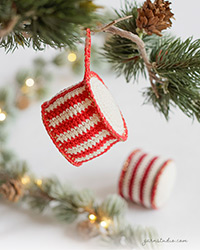



Post a comment to pattern DROPS 250-1
We would love to hear what you have to say about this pattern!
If you want to leave a question, please make sure you select the correct category in the form below, to speed up the answering process. Required fields are marked *.